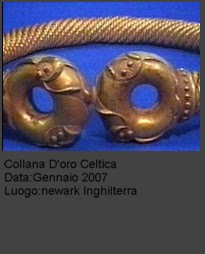TREASURES COINS AND LEGENDS OF 1933 DOUBLE EAGLE 
DOUBLE EAGLE COINS OF 1933
The Double Eagle gold coins were minted from $ 20
between 1850 and 1933. Play on one side of the standing figure freedom 'and the other an eagle
. They were called up to Double Eagles
time because of the California Gold Rush in the currency's highest
worth 10 dollars. Today there are more rare and valuable coins in the world.
When he became president of the United States in 1933, Franklin Roosevelt
brought the country out of the gold standard so that the economy could
recover from the Great Depression. He da1la movement withdraw all
gold coins, so it became illegal to possess. Many citizens
deliver their gold to banks, but in the meantime, the U.S. Mint
had 445,000 coins minted $ 20 de1 1933. Not
were never put into circulation, but were merged and destroyed.
Initially it was thought that they had destroyed all but two
entrusted to the Smithsonian so that the preserves. However,
A few years later, when the Double Eagles began to reappear in
auction houses, it became clear that many of them had been stolen from Pima to be destroyed.
American intelligence services went into action to trace illegal money now and found that U.S. Mint Director George McCann had stolen dieci.Alla end they were found only nine but finished tenth in the collection of King Farouk of Egypt, one of the greatest coin collectors in the world. This specimen, along with two of the Smithsonian Institute, are the only three still esistenti.Nel 1944, to export a double eagle of 1933, King Farouk asked for a license, the Treasury Department granted because at that time ignored the theft of ten coins. Only after the Department became aware of having committed a blunder from
legally and diplomatically. Money, in fact, was illegal and stolen
for more, but at the height of World War II was not
certainly should raise a diplomatic incident, where i'Egitto
had a very important strategic location in the heart of the Mediterranean.
So the CIA had to wait until in 1952, Farouk was deposed.
and his collection of coins put up for auction.
However, soon after the U.S. government had ordered
ufficialmenre the Egyptian government to remove the money stolen from the auction and
return to the United States, this vanished for half a century.
reappeared in 1996 when a prominent and respected coin dealer, Stephen Fenton
English, harbor at the Waldorf Astoria Hotel in New York a
de1 Double Eagle 1933 for sale to American collectors. The federal agents were
collectors, Fenton was arrested and the money
confiscata.Si think it belonged to the same collection of Farouk.
Fenton was issued and court proceedings to protect its reputation and demonstrate
the legitimate right of ownership. Meanwhile
first coin was kept in a vault at the World Trade Center. The matter was settled out of court
and money was transferred to Fort Knox, Kentucky in
, while Preparations were made to be auctioned.
The auction took place at Sotheby's July 30, 2002, and the coin was sold for 7,590,020 dollars
to an anonymous bidder. The director of the Mint
American, Henrietta Holsman Fore, spoke of money as more 'valuable
the world. David Redden, vice chairman of Sotheby's, and Lawrence R.
Stack, Stack de1la CEO, stated:
The story of this coin, and one of the most 'great numismatic mysteries of all time
. Still, the currency is on display at the Federal Reserve Bank of New York
.
The currency now legal tender. After the auction, the U.S. Mint
gave it full ownership, making it the only Double Eagle, 1933
for which private ownership is allowed. Any other movement is still illegal in
because stolen, and in a dry
official communication i1 Treasury Department said that every coin
uiteriormente found will be confiscated and destroyed.

























